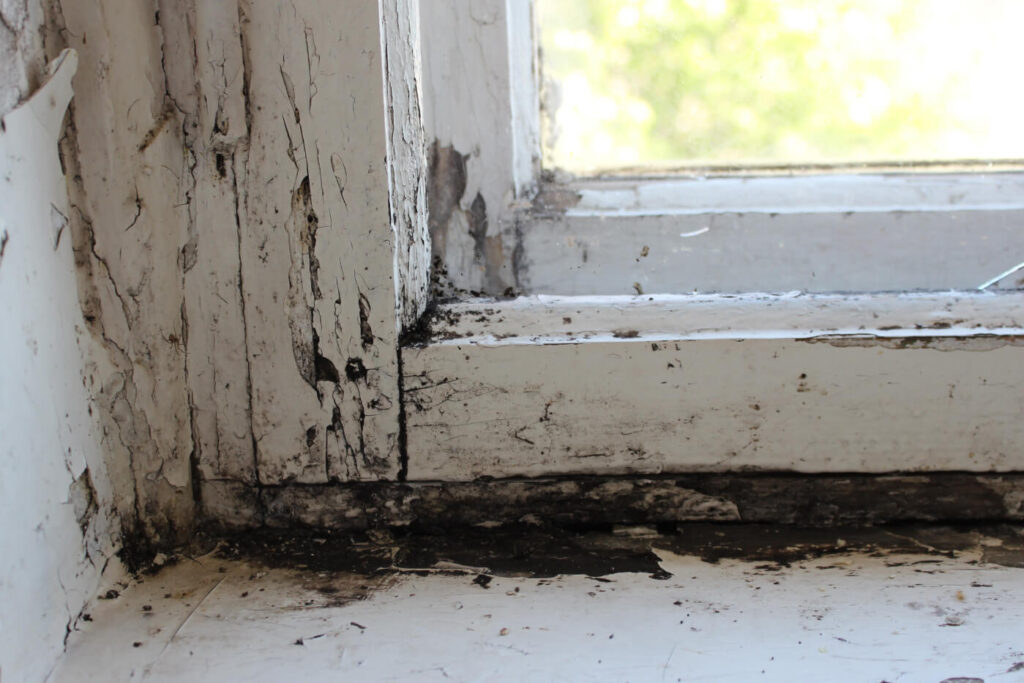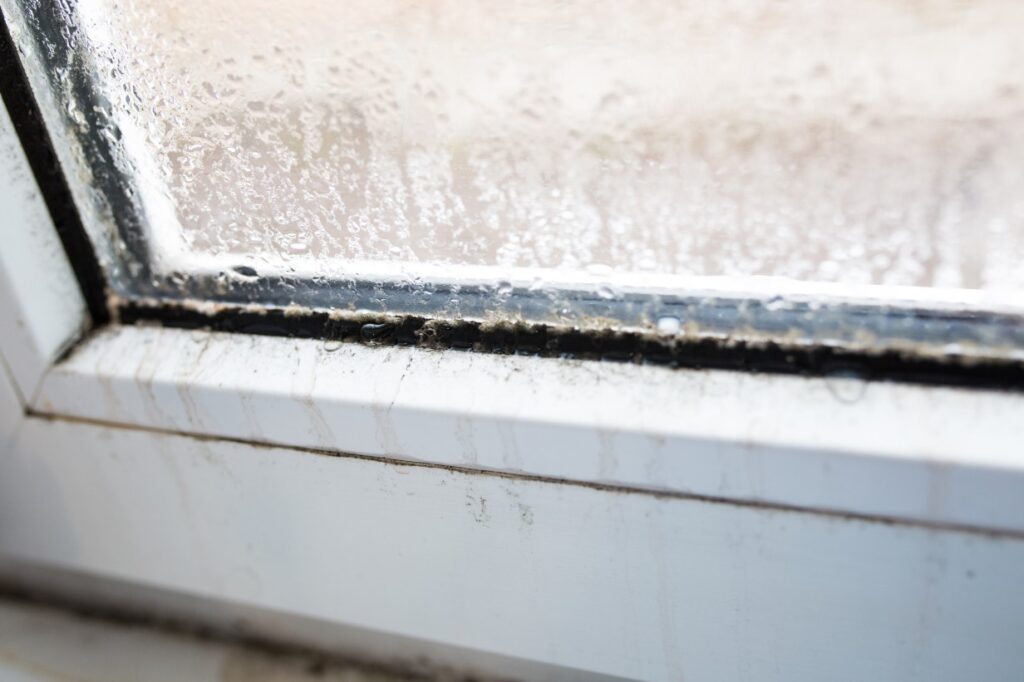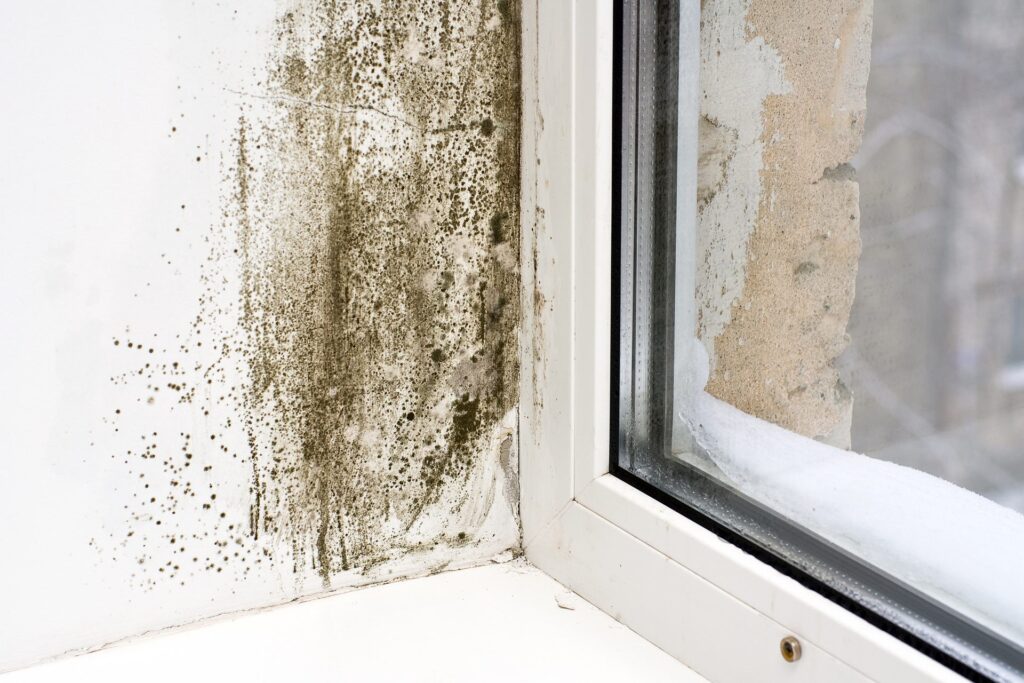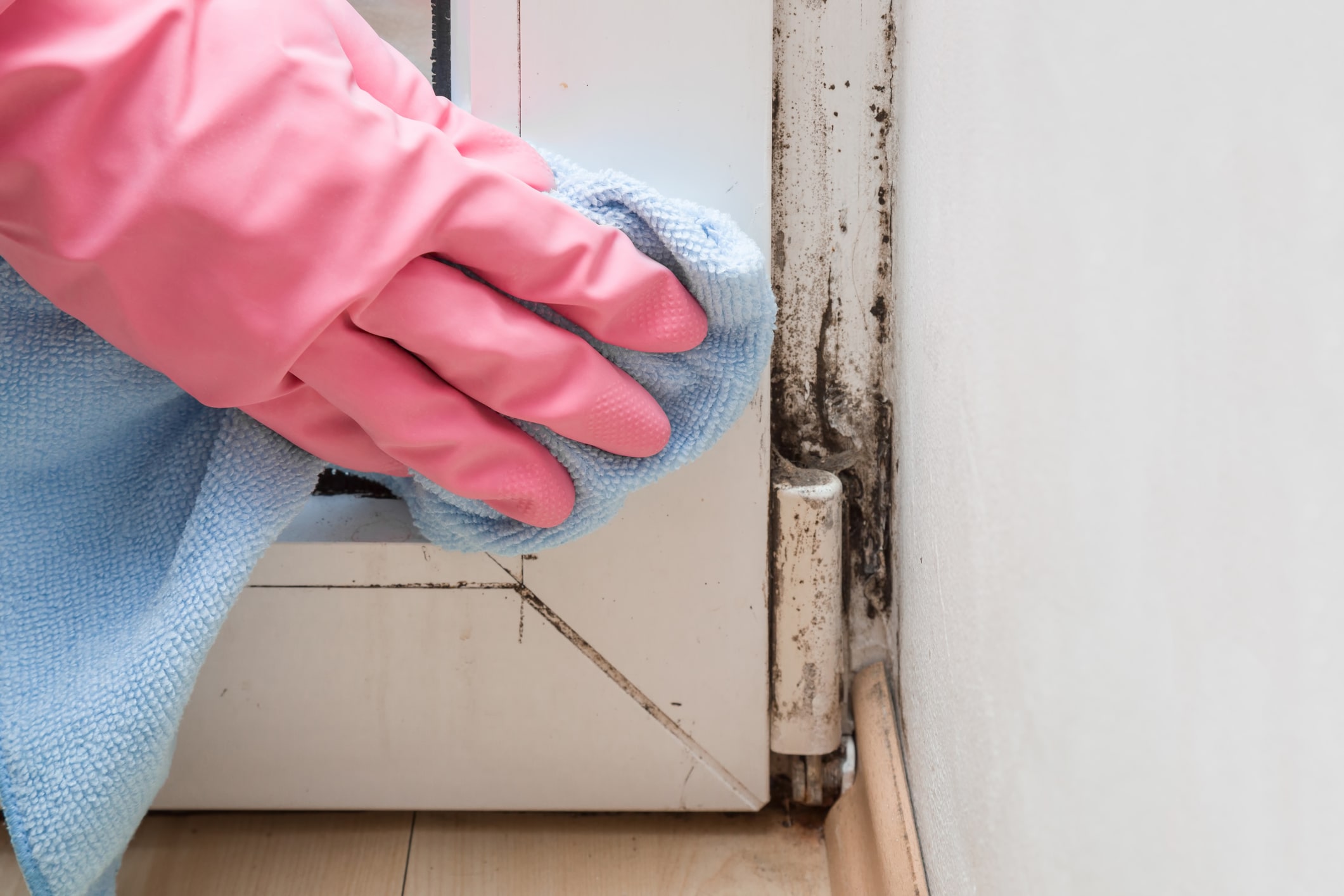Types of mold on windows can vary, with different colors and forms of mold appearing on window sills, frames, and seals. Mold growth on windows is often linked to moisture buildup, poor ventilation, and condensation, which create ideal conditions for various mold types. In this article, we’ll cover the most common molds found on windows, their causes, health risks, prevention tips, and safe removal methods.
1. Common Types of Mold on Windows
Several mold types commonly appear on windows, each indicating certain environmental conditions and requiring specific cleaning methods.
Key Mold Types Found on Windows:
- Black Mold (Stachybotrys): Known for its slimy texture and dark color, black mold often appears on damp surfaces like window sills, especially in areas with persistent moisture.
- Green Mold: This mold type is frequently found on window frames and seals where condensation builds up, and it can often appear as a fuzzy or slimy greenish layer.
- White Mold: White mold around windows may blend in with surfaces, making it harder to detect. It thrives in high-humidity environments and is usually powdery in texture.
- Aspergillus: Typically found on window panes and frames, Aspergillus can appear black, green, or yellow, and often grows in areas with frequent dust accumulation.
- Cladosporium: This mold type is commonly seen on wooden frames, where it appears dark brown or black, especially if the wood has retained moisture.

2. Causes of Mold on Windows
Mold growth on windows is primarily caused by excess moisture, often due to condensation, leaks, or poor ventilation. Other factors that encourage mold growth include:
- High Humidity: Elevated indoor humidity levels lead to moisture buildup on windows, which supports mold growth.
- Condensation: When warm indoor air contacts cold window surfaces, condensation forms, creating a damp environment that mold thrives in.
- Leaky Windows: Water seeping through poorly sealed windows can cause mold to develop around frames and seals.
- Dust and Dirt: Mold can feed on organic materials, so accumulated dust and dirt on window surfaces provide additional fuel for mold growth.

3. Health Risks of Mold on Windows
Mold on windows can affect indoor air quality and lead to various health issues, especially in people with mold sensitivities. Health risks include:
- Allergic Reactions: Mold spores can trigger allergies, causing symptoms like sneezing, itchy eyes, and skin irritation.
- Respiratory Issues: Prolonged exposure can lead to respiratory issues, particularly for individuals with asthma or compromised immune systems.
- Headaches and Fatigue: In homes with extensive mold growth, residents may experience headaches and fatigue.
4. Preventing Mold on Windows
Preventing mold on windows involves controlling moisture and maintaining proper ventilation. Here are some effective prevention tips:
- Reduce Humidity: Use dehumidifiers to keep indoor humidity levels below 50%.
- Improve Airflow: Open windows regularly or use exhaust fans to enhance ventilation and dry any moisture.
- Clean Windows Regularly: Dust and clean window surfaces frequently to prevent mold from finding a food source.
- Seal Windows Properly: Ensure frames and seals are watertight to prevent leaks.
- Use Mold-Resistant Paint: For wooden frames, mold-resistant paint can help create a barrier against moisture.

5. Safe Removal of Mold on Windows
If mold is already present, here are tips for safe removal of mold on windows:
- Wear Protective Gear: Use gloves, a mask, and safety goggles to avoid contact with mold spores.
- Vinegar Solution: Spray white vinegar on the moldy area, let it sit for an hour, then scrub with a soft brush.
- Baking Soda Mix: Mix a teaspoon of baking soda with water, apply to the moldy area, and scrub. Rinse with a damp cloth.
- Commercial Mold Cleaners: For severe mold, commercial mold removers are effective. Ensure proper ventilation when using them.
- Professional Help: If black mold or significant mold growth is present, consider hiring a professional mold removal service for safe and thorough cleaning.
Comparison Table: Types of Window Materials and Their Resistance to Mold
Choosing the right window materials can also help prevent mold growth by improving insulation and moisture resistance. Here’s a comparison of popular window materials:
| Window Material | Mold Resistance | Durability | Maintenance | Best Use |
|---|---|---|---|---|
| Vinyl | High | High | Low | Affordable and energy-efficient, ideal for most modern homes |
| Wood | Moderate | Moderate | High | Classic aesthetic for traditional homes, requires regular sealing to prevent mold |
| Aluminum | Moderate | High | Low | Durable with a sleek design, best for contemporary homes |
| Fiberglass | Very High | Very High | Low | Premium choice with excellent mold resistance, suitable for energy-efficient homes |
Material Recommendations:
- Vinyl: Provides strong mold resistance, easy to clean, and requires minimal maintenance.
- Wood: Adds aesthetic appeal but needs regular sealing to prevent mold and moisture buildup.
- Aluminum: Good durability, though moderate insulation may lead to condensation if not insulated.
- Fiberglass: High mold resistance and insulation, ideal for humid environments and high-performance homes.
Conclusion
Understanding the types of mold on windows and their causes is essential for effective prevention and removal. From black mold on window sills to white mold around window seals, mold can pose health risks and affect indoor air quality if left unchecked. By keeping windows clean, reducing humidity, and selecting mold-resistant materials like vinyl or fiberglass, homeowners can minimize the risk of mold growth. For severe cases, professional removal is recommended to ensure safe and complete cleanup. Through regular maintenance and mold-resistant upgrades, you can maintain a healthier, mold-free home.


